Plants and Trees
Biggest Trees in The World List

Biggest Trees in The World List
There are many things to see in this world, and some of the most amazing sights are the biggest trees in the world. These behemoths can reach up to 300 feet high and have trunk circumferences of over 25 feet. Some of these trees take centuries to grow, and their wood is so strong that it’s used to make railroad ties and ship masts. Here are some of the biggest trees in the world, listed from smallest to largest.
In the world, some trees tower high above all others. They are called giant sequoias, and they can grow to be over 300 feet tall. These trees can live for over 3,000 years and are found in only a few places on earth. The biggest of these trees are located in California’s Sequoia National Park.
“Biggest Trees in The World List”
Giant sequoia (Sequoiadendron giganteum)
Sequoiadendron giganteum, commonly known as the giant sequoia, is the world’s largest tree species. It can grow to be more than 300 feet tall and has a trunk up to 25 feet wide. These trees are native to California and can live for more than 3,000 years. Giant sequoias are an important part of the ecosystem and provide shelter and food for wildlife.
“Biggest Trees in The World List”

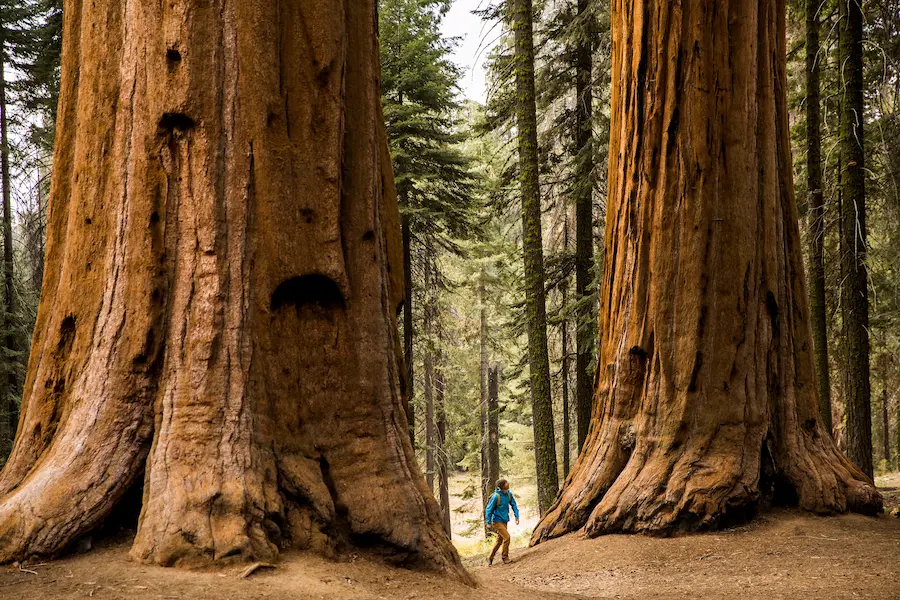
Coast redwood (Sequoia sempervirens)
The coast redwood is the world’s tallest tree. These massive trees can grow up to 379 feet tall and have trunk diameters of 8 feet. The coast redwood thrives in a temperate climate and is found along the Pacific coast of North America. These trees are an important part of the ecosystem, providing food and shelter for animals and acting as a carbon sink. The bark of the coast redwood is very thick and fibrous and is a reddish-brown colour. The leaves are small, triangular, and dark green.
“Biggest Trees in The World List”

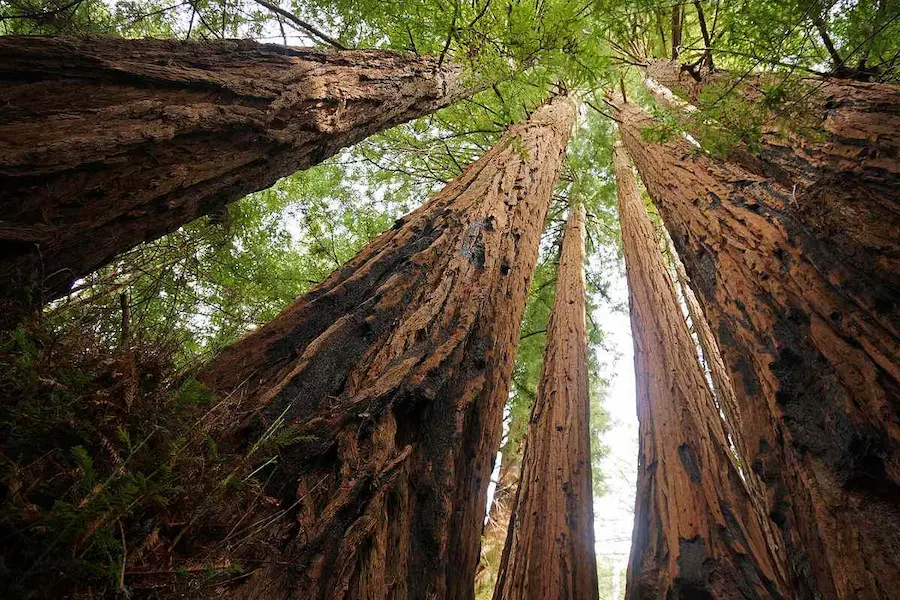
Kauri (Agathis australis)
Kauri is some of the largest trees in the world, and they are found exclusively in New Zealand. These trees can grow up to 150 feet tall and have a trunk up to 12 feet in diameter. Kauri forests once covered much of the country, but now they are confined to a few small areas. Kauri is threatened by a number of factors, including logging and climate change.
Kauri has been used for various purposes by the Māori people, including construction, weapons, and tools. The wood is also highly prized for its beauty and durability and is often used in furniture and flooring.
“Biggest Trees in The World List”


Western red cedar (Thuja plicata)
Western red cedar, also known as Thuja plicata, is a coniferous tree found in the Pacific Northwest region of North America. It is a large tree that can grow up to 200 feet tall and has a trunk diameter of 6 feet. The bark on the trunk is reddish-brown in colour and scaly. The leaves are green and scale-like, and the cones are small and brown. The tree is used for lumber, fence posts, and shingles.
“Biggest Trees in The World List”


Tasmanian blue gum (Eucalyptus globulus)
The Tasmanian blue gum, also known as Eucalyptus globulus, is a tall tree native to Tasmania. It can grow up to 150 feet tall and has a long trunk with smooth bark. The leaves are green and oval-shaped, and the flowers are white or pale yellow. The Tasmanian blue gum is an essential source of timber and is used for building construction, furniture manufacturing, and other purposes.
The Tasmanian blue gum, also known as the flooded gum, is a tree that is native to Tasmania. The tree can grow up to 150 feet tall and has a trunk up to 10 feet in diameter. The tree’s bark is gray and smooth, and the leaves are green and oval-shaped. The tree’s flowers are yellow, and the fruit is a capsule containing black seeds.
“Biggest Trees in The World List”
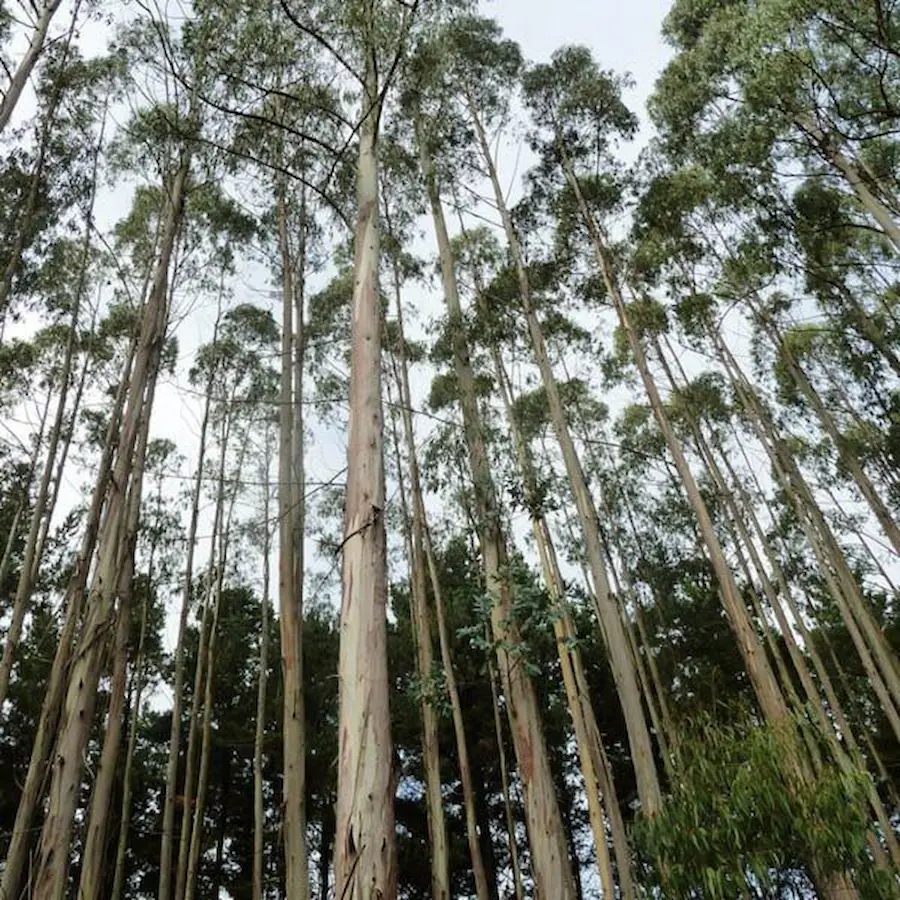
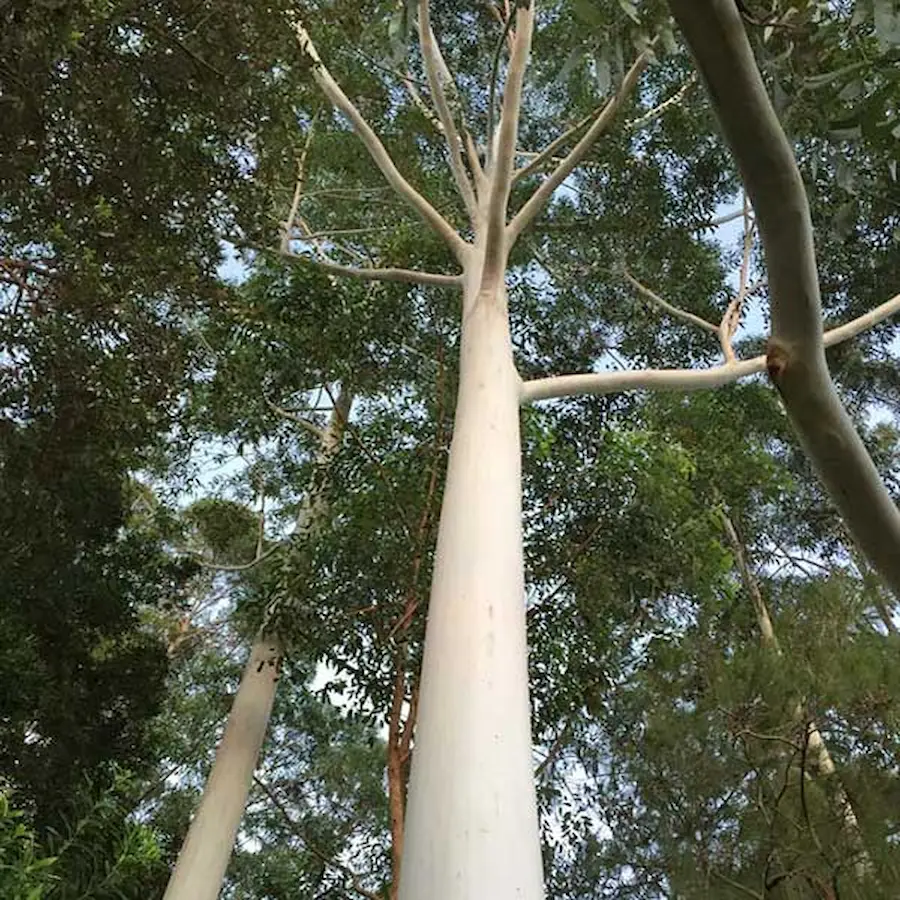
Eucalyptus regnans
The article will discuss the eucalyptus regnans, the tallest flowering plant in the world. The eucalyptus regnans can grow over 300 feet tall and has been known to live up to 500 years.
Eucalyptus regnans, also known as the mountain ash, are tall eucalyptus trees that can grow up to 300 feet tall. It is found in Australia and Tasmania. The mountain ash is an important part of the ecosystem, providing food and shelter for animals and birds. It is also used for lumber and pulp.
“Biggest Trees in The World List”


Coast Douglas-fir (Pseudotsuga menziesii)
The Douglas-fir (Pseudotsuga menziesii) is one of the most common trees in the Pacific Northwest and one of the few conifers that grow near the coast. The tree can reach 200 feet or more, with a trunk diameter of up to six feet. The bark is thin and reddish-brown, and the branches are drooping. The needles are 1-2 inches long, green above and blue-green below.
The Coast Douglas-fir, Pseudotsuga menziesii var. menziesii, is a coniferous tree found in the Pacific Northwest of North America. It is the tallest tree in the region and can reach over 200 feet. The tree has a long lifespan and can live for up to 1000 years. The Coast Douglas-fir is an important part of the forest ecosystem and provides food and shelter for wildlife.
“Biggest Trees in The World List”
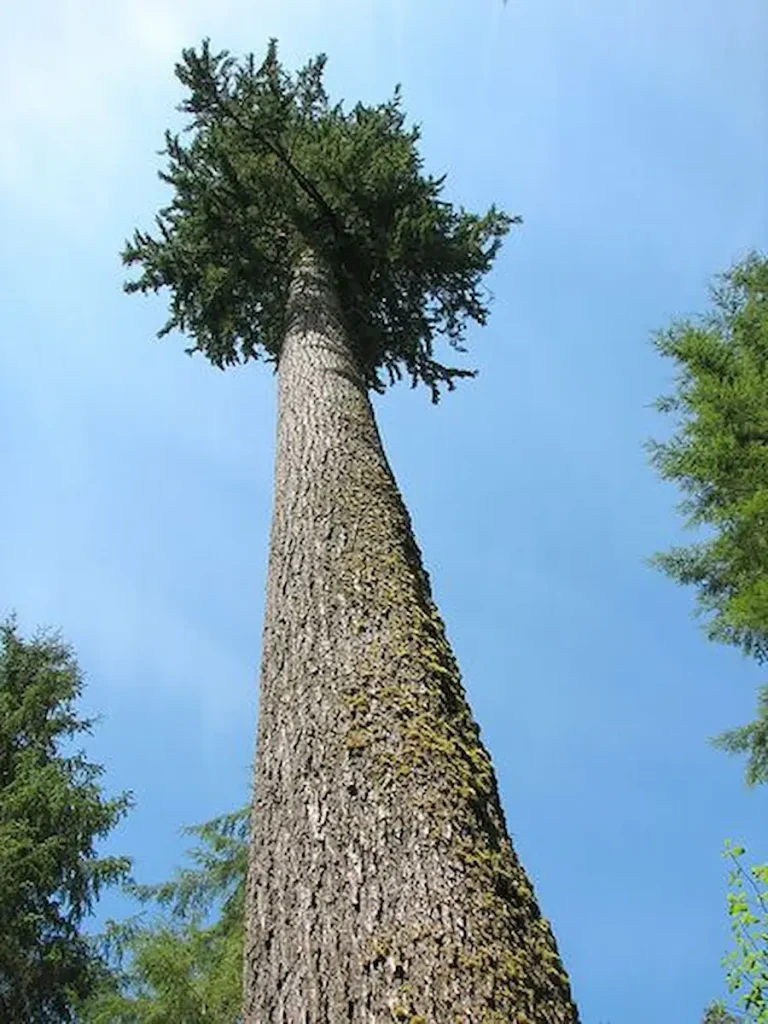

Sitka spruce (Picea sitchensis)
The Sitka spruce (Picea sitchensis) is a coniferous tree indigenous to the Pacific Northwest region of North America. It is the second-tallest species of spruce, after the white spruce, and can grow to over 150 feet (45 meters). The Sitka spruce has a broad, dense crown with horizontal branches and produces long, slender cones up to 8 inches (20 cm) in length.
The Sitka spruce is a tall tree found in the forests of the Pacific Northwest. It is a fast-growing tree and can reach over 150 feet. The Sitka spruce has long green needles on top and silver on the bottom. The tree produces cones that are about 3 inches long.
“Biggest Trees in The World List”
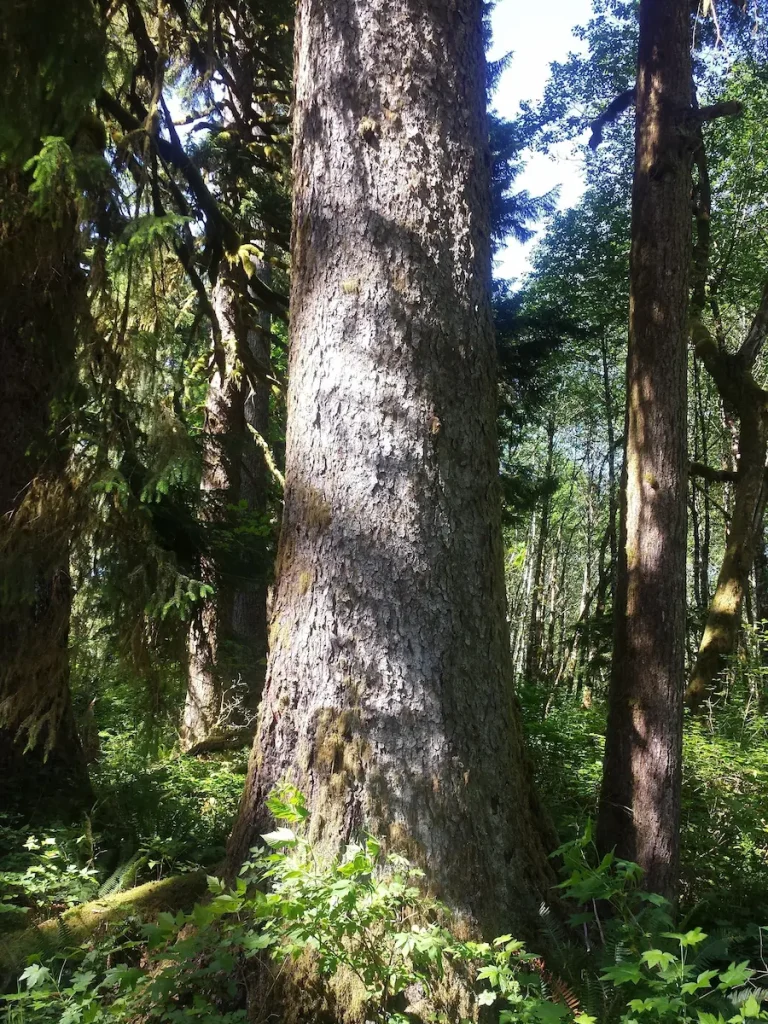

Eucalyptus obliqua
Eucalyptus oblique is a tall, slender tree that grows in the mountains of southeastern Australia. It has smooth, grey bark and long, narrow leaves green on top and greyish-white on the bottom. The tree blooms in late winter or early spring, bearing clusters of white flowers. Eucalyptus oblique is a valuable timber tree prized for its robust and durable wood.
The eucalyptus genus is one of the largest in the world, made up of more than 700 species. The eucalyptus obliqua is a lesser-known variety found mostly in Australia. This tree is known for its quick growth and adaptability, making it ideal for reforestation projects. Eucalyptus oblique is used for many purposes, including timber, fuel, and medicine.
“Biggest Trees in The World List”
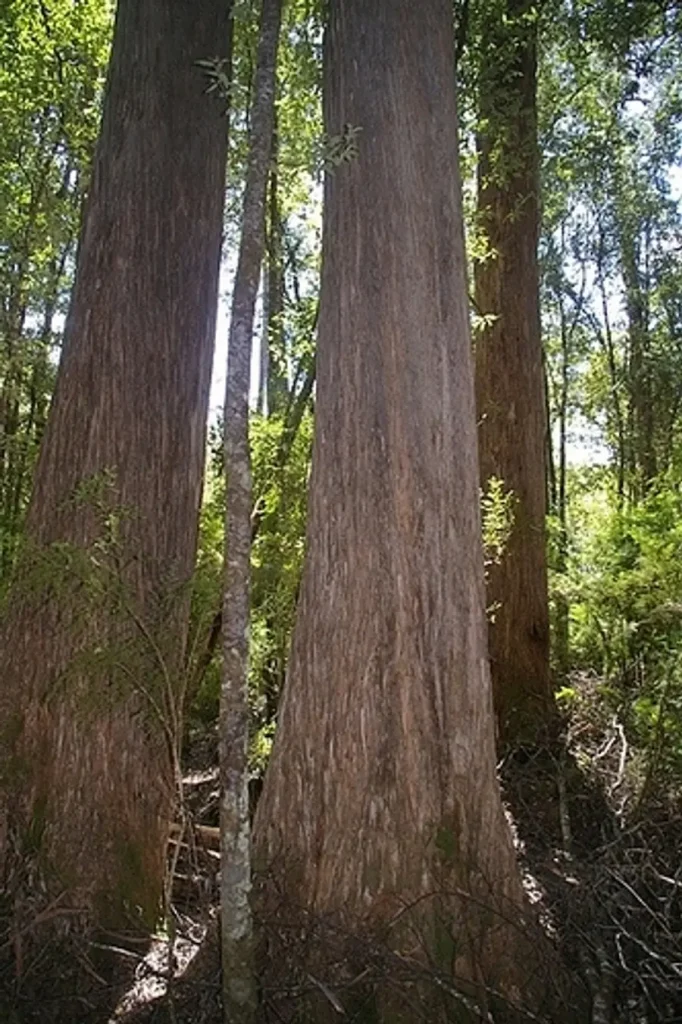

Eucalyptus delegatensis
The eucalyptus delegates, also known as the mountain ash, is a tall tree found in the Pacific Northwest region of the United States. This tree can grow up to 150 feet tall and has a trunk up to 6 feet in diameter. The mountain ash is an evergreen tree with oval leaves and about 4 inches long. This tree produces white flowers that bloom in the springtime.
The mountain ash is a hardy tree and can tolerate cold and drought conditions. This tree is famous for use in windbreaks and as a shade tree. The tree’s bark is thin and smooth, and the flowers are white or pink.
“Biggest Trees in The World List”


“Biggest Trees in The World List”
How to protect Biggest Trees in The World?
As the climate changes, trees are increasingly threatened by pests, diseases, and extreme weather. Arborists are working to protect the biggest trees globally, which can provide shade and cooling in urban areas, sequester carbon, and are important for biodiversity. There are several ways to protect these trees, including using pesticides and fungicides, watering during drought, and creating buffering zones around them.
“Biggest Trees in The World List”
What is The Reason of Extinction Biggest Trees in The World?
The biggest and oldest trees in the world are dying. They are succumbing to a fungal infection that wipes out whole forests of pine trees. The infection, known as the Dothistroma septosporum, was first noticed in Europe in the 1800s, and it has spread to North America, South America, Asia, and Australia.
The biggest trees in the world are currently under threat of extinction. These trees can grow up to 100 meters tall and live for up to 2,500 years. They are an important part of the ecosystem, providing food and shelter for animals and acting as a carbon sink. However, they are increasingly being chopped down to make way for development. If action is not taken soon, these trees could be lost forever.
In the world of forestry, there are big trees and small trees. But when it comes to the issue of extinction, it is the biggest trees that face the greatest risk. A new study published in the journal Science finds that the largest trees on Earth are more likely to go extinct than smaller trees.
“Biggest Trees in The World List”
Conclusions
In conclusion, the biggest trees in the world are an impressive sight, and they are a testament to the power and majesty of nature. If you have the opportunity, visit one of these trees and experience its beauty firsthand.
“Biggest Trees in The World List”
More Resources
Parasitic Plants Example in The World

Plants and Trees
The Impact on the Environment Due to the Destruction of Plants and Trees

Key Takeaways
- Plants and trees are vital for oxygen production, biodiversity, and climate regulation.
- Deforestation leads to severe environmental consequences like climate change and biodiversity loss.
- Human activities, such as agriculture and urban expansion, are primary causes of tree destruction.
- Solutions like reforestation, sustainable practices, and conservation laws can help mitigate the damage.
Introduction
Imagine a world without trees. The air feels heavy, the rivers run dry, and wildlife vanishes. It’s not a distant future—it’s a reality we inch closer to every time a forest is cleared. Trees and plants are the backbone of life on Earth, providing oxygen, stabilizing the soil, and supporting countless species. Yet, humans continue to destroy them at an alarming rate.
In this article, we’ll explore the causes and effects of plant and tree destruction and why it’s such a pressing environmental issue. We’ll also discuss solutions to help turn the tide. So, whether you’re a nature lover or just curious about how trees impact the environment, keep reading—you might be surprised by what you learn.
Why Are Plants and Trees So Important?
Plants and trees do more than just look pretty or provide shade. They’re essential for the survival of life on Earth.
- Oxygen and Clean Air
Trees act as Earth’s lungs, absorbing carbon dioxide and releasing oxygen. A single mature tree can produce enough oxygen for up to four people a day. - Biodiversity Hotspots
Forests are home to more than 80% of terrestrial animals, plants, and fungi. When trees are destroyed, countless species lose their homes. - Climate Regulators
Trees help regulate temperature and rainfall patterns by releasing water vapor and absorbing sunlight. Without them, the planet’s climate becomes unbalanced. - Preventing Soil Erosion
Tree roots anchor the soil, preventing it from washing away during heavy rains. Without trees, fertile land can turn into deserts. - Water Cycle Support
Trees play a critical role in maintaining the water cycle by drawing groundwater and releasing it into the atmosphere as vapor.


Causes of Plant and Tree Destruction
1. Deforestation for Agriculture
Farmers often clear forests to grow crops or raise livestock. While this boosts food production, it comes at the cost of environmental stability.
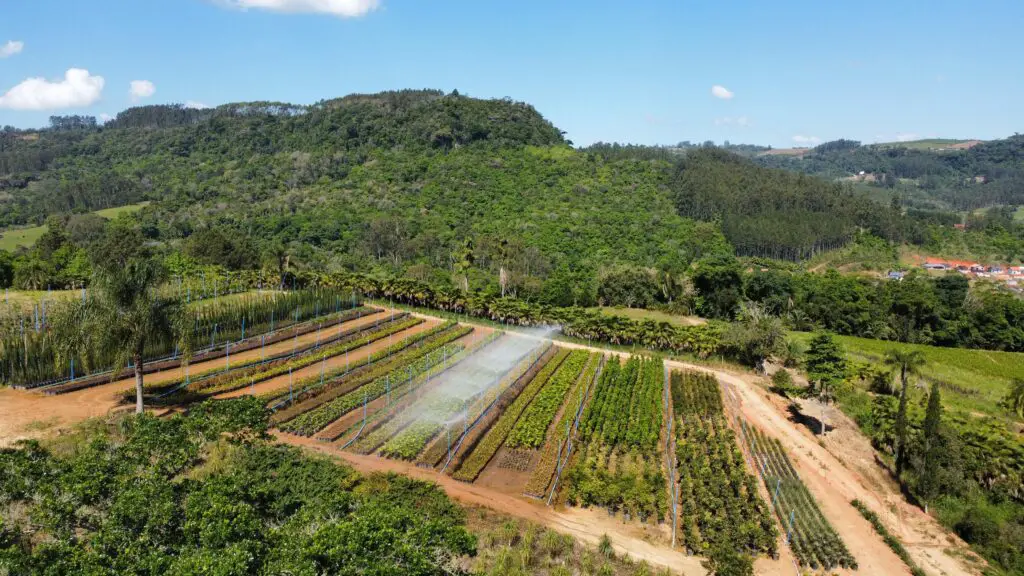
2. Urban Expansion
As cities grow, forests are cleared to make way for housing, roads, and infrastructure. This not only destroys trees but also fragments habitats.

3. Logging and Wood Industry
The demand for paper, furniture, and construction materials drives large-scale logging, which is often unsustainable.

4. Wildfires
Some fires occur naturally, but many are caused by human negligence, like unattended campfires or discarded cigarettes.

5. Mining and Infrastructure Projects
Activities like mining and dam construction often require large areas of land, leading to significant deforestation.
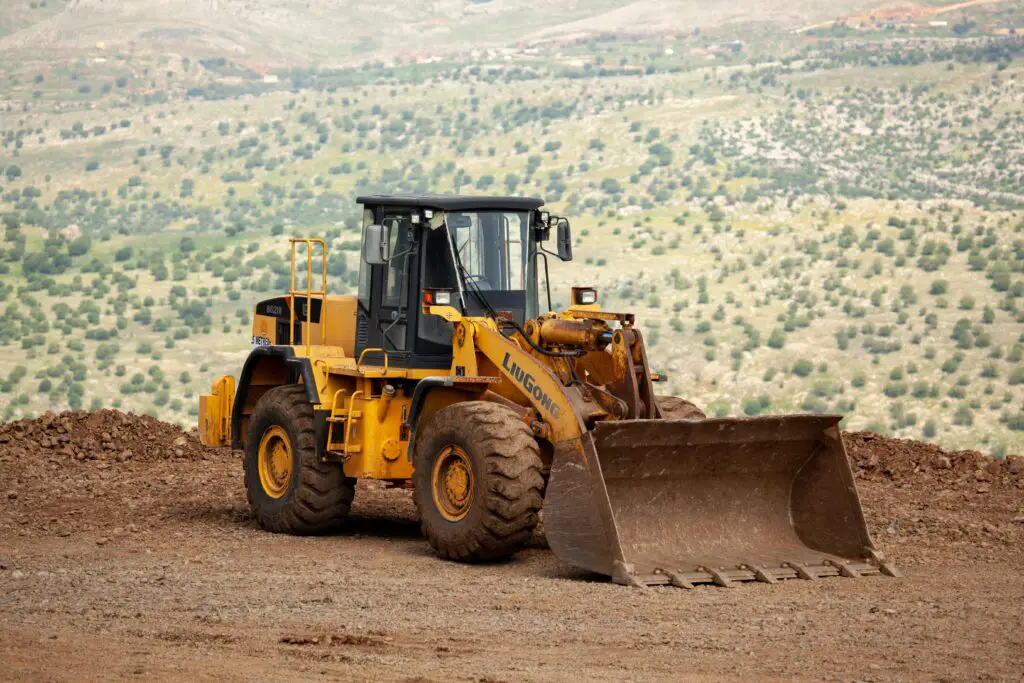
Environmental Impacts of Tree and Plant Destruction
1. Climate Change
When trees are cut down, they release stored carbon dioxide, contributing to global warming. Deforestation accounts for nearly 15% of global carbon emissions.
2. Loss of Biodiversity
Deforestation forces animals and plants to adapt, migrate, or face extinction. This disrupts ecosystems and reduces biodiversity.
3. Soil Degradation and Desertification
Without tree roots to hold it together, soil becomes prone to erosion. Over time, this can turn fertile land into barren deserts.
4. Disruption of Water Cycles
Fewer trees mean less water vapor in the atmosphere, leading to reduced rainfall and drier conditions.
5. Increased Natural Disasters
Tree loss can worsen floods and landslides since there’s no vegetation to absorb water or stabilize slopes.


How Does This Affect People?
Deforestation doesn’t just harm the environment—it impacts human lives too.
- Indigenous Communities: Many indigenous groups rely on forests for food, medicine, and shelter. Tree destruction threatens their way of life.
- Agriculture: Without trees, soil quality declines, making farming less productive.
- Natural Disasters: More floods, droughts, and landslides mean higher costs for communities and governments.


Solutions to Protect Trees and Plants
1. Reforestation and Afforestation
Planting trees can restore degraded land and offset carbon emissions.
2. Sustainable Practices
Using wood and paper products responsibly and supporting companies that follow ethical sourcing practices can make a difference.
3. Stronger Laws and Policies
Governments must enforce stricter rules to prevent illegal logging and deforestation.
4. Education and Awareness
Teaching people about the importance of trees can inspire them to take action.
5. Support NGOs
Organizations like WWF and Greenpeace work tirelessly to protect forests. Supporting them can amplify conservation efforts.


Short Answer to the Problem
The destruction of plants and trees harms the environment by increasing carbon emissions, reducing biodiversity, and causing soil and water imbalances. To combat this, we need global efforts like reforestation, sustainable logging, and stronger laws to protect forests.
FAQs
1. Why are trees important for the environment?
Trees produce oxygen, absorb carbon dioxide, and support ecosystems by providing shelter and food for wildlife.
2. What are the main causes of deforestation?
Key causes include agriculture, urbanization, logging, and mining.
3. How does tree destruction affect climate change?
Cutting down trees releases stored carbon dioxide, contributing to global warming.
4. What can individuals do to help?
Plant trees, reduce paper waste, support eco-friendly products, and spread awareness about deforestation.
Conclusion
The destruction of plants and trees isn’t just an environmental issue—it’s a threat to life itself. From climate change to biodiversity loss, the ripple effects are felt far and wide. But it’s not too late to make a change. By understanding the importance of trees and taking collective action, we can protect our planet for future generations.
Let’s act now, before the last tree falls.
Plants and Trees
Human Benefits from Growing Plants

Gardening isn’t just a hobby; it’s a life-changing activity with benefits that go beyond the soil. Whether you’re growing plants in a backyard, on your balcony, or in tiny pots indoors, the rewards are immense. This guide breaks down how cultivating plants enriches our lives—physically, mentally, socially, and even financially.
Key Takeaways
- Growing plants improves physical and mental health.
- Plants clean the air, support biodiversity, and fight climate change.
- Gardening can save money and build community connections.
- Simple gardening tips can help anyone get started.
Why Growing Plants Matters
Imagine a world without greenery. No fresh vegetables on the plate, no trees filtering the air, and no blooming flowers to brighten our moods. Plants aren’t just decorations—they’re essential to our survival and well-being.
From reducing stress to combating climate change, the act of growing plants is like giving yourself and the planet a priceless gift. Let’s explore these benefits in detail.

How Growing Plants Improves Physical Health
1. Better Air Quality
Plants act like natural air purifiers. They absorb harmful pollutants like carbon dioxide and release oxygen, making the air fresher and cleaner. Indoor plants like snake plants and pothos are especially good at improving air quality in homes.
2. Access to Nutritious Food
Growing your own fruits, vegetables, and herbs means you get fresh, chemical-free produce. Plus, eating homegrown food is healthier and tastier than store-bought alternatives. Imagine plucking a ripe tomato or fresh basil for your salad—pure joy!
3. A Natural Way to Exercise
Gardening is surprisingly physical. Tasks like digging, planting, weeding, and watering are great for burning calories and strengthening muscles. Unlike a gym, gardening is enjoyable and rewarding—you’re creating life while staying active.

Mental Health Boost from Gardening
1. Stress and Anxiety Relief
There’s something magical about spending time with plants. The simple act of touching soil can reduce stress hormones and help you relax. Gardening works as a natural therapy that soothes the mind and body.
2. Gardening as Therapy
Many therapists recommend gardening to improve mental health. It helps people struggling with depression, PTSD, or anxiety find peace and purpose. Even small steps, like nurturing a tiny plant, bring immense joy.
3. Improved Focus and Creativity
Being around plants has been shown to boost concentration and creativity. Whether you’re working from home or studying, having greenery nearby can sharpen your mind and keep distractions away.
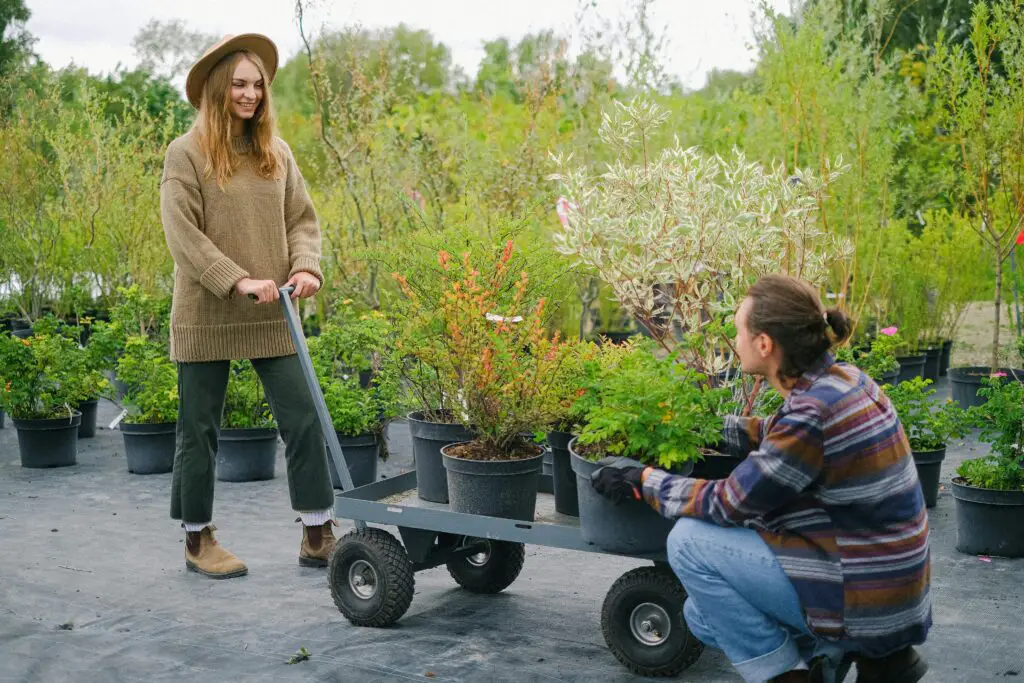
Environmental Benefits of Growing Plants
1. Fighting Pollution
Plants play a crucial role in cleaning the environment. They absorb pollutants, trap dust, and release fresh oxygen, making urban areas more livable.
2. Combatting Climate Change
Every plant you grow helps fight climate change. Trees and shrubs absorb carbon dioxide, a major greenhouse gas, and reduce the overall temperature of the planet.
3. Supporting Biodiversity
Growing a variety of plants in your garden invites bees, butterflies, and birds to thrive. These creatures are vital for pollination, which ensures that plants and crops can reproduce.
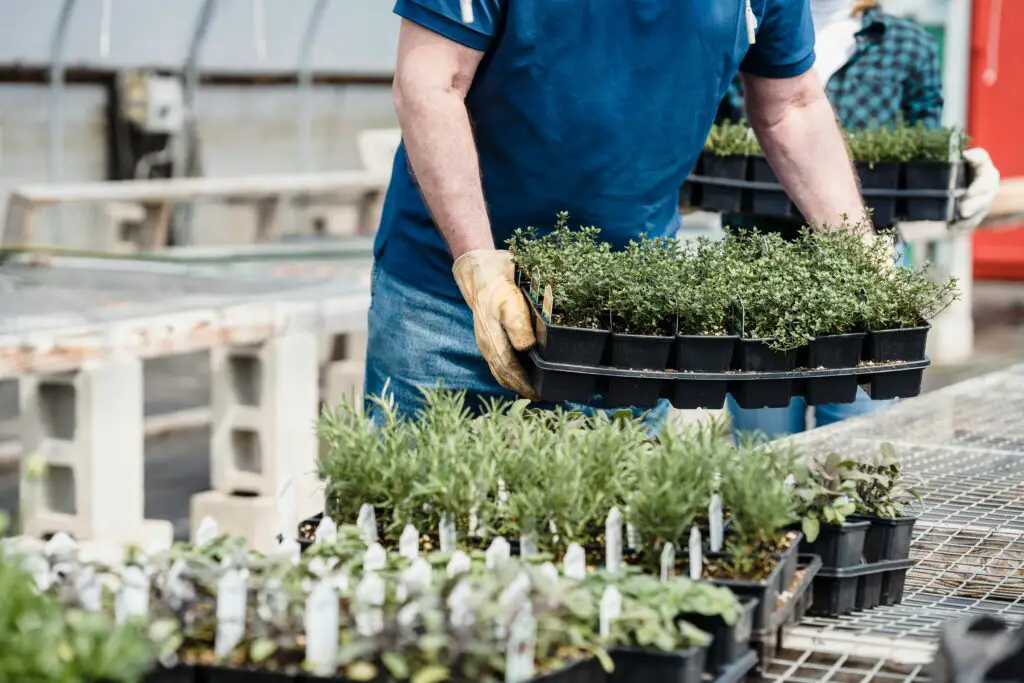
Social and Community Perks
1. Building Stronger Communities
Community gardens bring neighbors together. They provide a space for people to share tips, harvests, and stories while working toward a greener world.
2. Teaching Sustainability
Gardening teaches kids and adults about the importance of sustainability. It’s a hands-on way to understand the value of food, water, and effort in maintaining a healthy ecosystem.

Financial Savings and Sustainability
1. Cutting Grocery Bills
Growing your own produce can save you money. A small vegetable patch can provide a steady supply of seasonal fruits and vegetables.
2. Reducing Waste
Home gardens reduce the need for plastic packaging and long supply chains. It’s a step toward sustainable living that cuts down on waste and promotes self-sufficiency.
Emotional Fulfillment
1. Sense of Achievement
There’s no feeling quite like watching a seed sprout or a flower bloom under your care. Gardening gives you a sense of accomplishment and pride.
2. Reconnecting with Nature
In a fast-paced digital world, gardening is a way to slow down and reconnect with the earth. It’s a reminder of how deeply we’re tied to nature.
How to Get Started with Growing Plants
- Pick the Right Plants: Choose easy-to-grow options like tomatoes, basil, or succulents if you’re a beginner.
- Gather Basic Tools: You’ll need pots, soil, gloves, and watering equipment.
- Learn Plant Needs: Some plants love sunlight; others prefer shade. Know your plants’ requirements before planting.
- Start Small: Begin with a small area or a few pots to avoid feeling overwhelmed.
- Use Eco-Friendly Methods: Opt for compost, organic fertilizers, and natural pest control methods to grow sustainably.
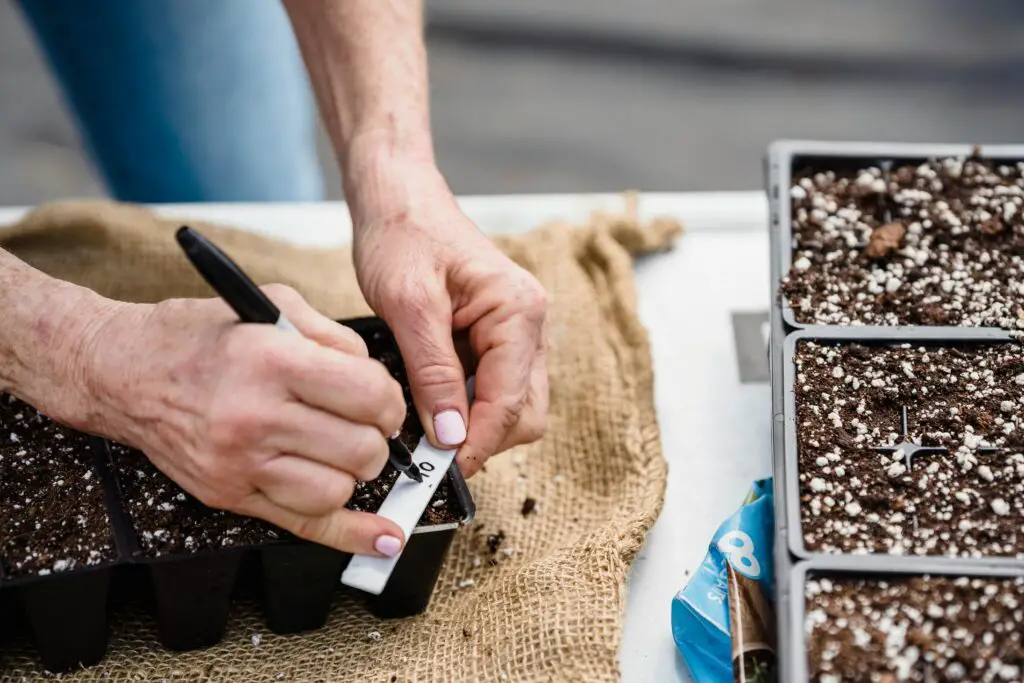
FAQs
1. What are the easiest plants to grow for beginners?
Herbs like basil and mint, vegetables like lettuce, and succulents are great choices for beginners.
2. Can I grow plants in a small space?
Absolutely! Container gardening and vertical gardens are perfect for balconies or limited spaces.
3. How do plants improve mental health?
Caring for plants reduces stress, improves focus, and provides a sense of calm and purpose.
Conclusion
Growing plants is more than just a pastime—it’s a way to nurture your body, mind, and the environment. Whether you’re planting flowers for beauty, vegetables for food, or trees for shade, the benefits ripple through every part of your life. Start small, stay consistent, and watch how something as simple as growing a plant can transform your world.
Plants and Trees
The Most Valuable Herbs in the World

Key Takeaways
- Herbs have been prized for centuries for their healing, culinary, and aromatic properties.
- Some herbs are incredibly valuable due to their rarity, labor-intensive harvesting, or powerful benefits.
- This article dives deep into the most valuable herbs globally, covering their uses, origin, and why they’re so precious.
Are you curious about what makes some herbs worth more than gold? Whether you’re a herb enthusiast or just starting your journey, this guide will uncover the secrets of the most valuable herbs in the world. We’ll explore their unique qualities, why they’re in such high demand, and how they’re used.
What Makes Herbs Valuable?
Not all herbs are created equal. The value of a herb depends on several factors:
- Rarity: Some herbs are challenging to grow or harvest, making them rare and expensive.
- Medicinal Uses: Herbs with proven health benefits often fetch high prices.
- Culinary Demand: Flavorful and aromatic herbs are prized in kitchens worldwide.
- Cultural Significance: Herbs used in rituals or traditions hold significant value.
Now, let’s dive into the most valuable herbs and see what sets them apart.
Saffron – The Red Gold
Saffron, often called “red gold,” is the world’s most expensive spice. It comes from the tiny threads of the Crocus sativus flower, primarily grown in Iran, Kashmir, and Spain.
Why Is Saffron So Expensive?
- Each flower produces only three delicate threads, and it takes about 75,000 flowers to produce just one pound of saffron.
- The harvesting process is entirely manual, requiring skilled labor.
Uses of Saffron
- Culinary: Adds a rich aroma and golden hue to dishes like paella and biryani.
- Medicinal: Known for its mood-boosting, anti-inflammatory, and antioxidant properties.
- Beauty: Used in skincare for its brightening effects.

Ginseng – Nature’s Energy Booster
Ginseng is a root herb valued for its health benefits. Two primary types, American Ginseng and Asian Ginseng, dominate the market.
Why Is Ginseng Valuable?
- Ginseng takes years to mature, and wild-grown varieties are incredibly rare.
- It’s highly sought after in traditional Chinese medicine.
Benefits of Ginseng
- Boosts energy and reduces fatigue.
- Enhances cognitive function and memory.
- Helps the body fight stress and inflammation.

Vanilla – The Sweet Treasure
Vanilla, derived from the pods of the Vanilla planifolia orchid, is a staple in desserts and perfumes.
Why Is Vanilla So Costly?
- Pollination must be done manually since natural pollinators are rare.
- The curing process is long and labor-intensive.
Uses of Vanilla
- Culinary: Adds flavor to cakes, ice creams, and beverages.
- Fragrance: Used in perfumes and aromatherapy.
- Medicine: Sometimes used for its calming properties.

Yarsagumba – The Himalayan Gold
Also known as “caterpillar fungus,” Yarsagumba is a rare herb found in the Himalayan region.
Why Is Yarsagumba So Expensive?
- It grows at high altitudes and only under specific conditions.
- Harvesting is extremely labor-intensive and risky.
Uses of Yarsagumba
- Medicinal: Known for boosting energy, immunity, and libido.
- Cultural: Used in traditional Tibetan and Nepalese medicine.

Turmeric – The Golden Spice
Turmeric, a staple in Indian cuisine, is gaining global recognition for its health benefits.
Why Is Turmeric Valuable?
- Contains curcumin, a compound with potent anti-inflammatory and antioxidant properties.
- Its demand in health supplements has skyrocketed.
Uses of Turmeric
- Culinary: Adds a vibrant yellow color and earthy flavor to dishes.
- Medicinal: Supports joint health, digestion, and skin healing.
- Beauty: Used in face masks and scrubs for glowing skin.

FAQs
1. Which herb is the most expensive in the world?
Saffron is the most expensive herb due to its labor-intensive harvesting and limited supply.
2. Why are herbs like ginseng and Yarsagumba so valuable?
Their rarity, extensive harvesting process, and proven health benefits drive up their value.
3. Are valuable herbs sustainable?
Some valuable herbs face sustainability challenges due to overharvesting and climate change. Supporting ethical sourcing and fair trade helps protect them.
Conclusion
Herbs like saffron, ginseng, vanilla, Yarsagumba, and turmeric aren’t just everyday plants—they’re treasures with unique qualities that make them highly sought after. Whether they’re used for cooking, healing, or rituals, these herbs are a testament to nature’s incredible bounty.
Explore these herbs with care, and remember to support sustainable and ethical practices to ensure their availability for generations to come.
-

 Animals12 months ago
Animals12 months agoTypes of Ants Living in the World and Information
-

 Forests12 months ago
Forests12 months agoThe 10 Best Forests to Visit in the World
-

 Ocean1 year ago
Ocean1 year agoOceans in the World and Their Information & Locations
-

 Forests4 years ago
Forests4 years agoWhat Is The Biggest Rainforest In The World?
-

 Animals4 years ago
Animals4 years agoMost Popular Wild Animals in The World
-

 Animals4 years ago
Animals4 years ago(10) Insects Are Animals in the world?
-

 Forests1 year ago
Forests1 year agoThe Main Factors That Contribute to Forest Destruction
-

 Nature11 months ago
Nature11 months agoThe 10 Largest Farms in the World



